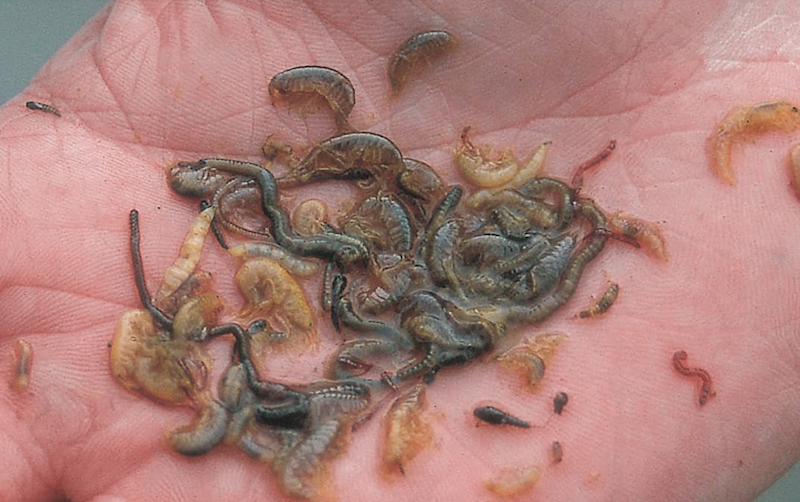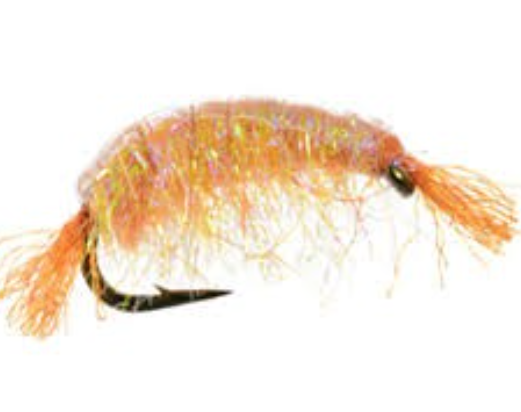Bug of the Month: The Scud
One of the most productive patterns that is quite often overlooked on our tailwaters is the scud. These freshwater crustaceans, sometimes mistakenly called freshwater shrimp, are consistent food sources throughout the year but the spring months find them even more plentiful on the menu. The scud is a high-protein meal that trout can’t resist.

The Low-down
Scuds have a relatively simple life cycle. Depending on the species, they move from egg to juvenile to adult in a few weeks or over a year. As they grow and molt, they virtually look the same in their juvenile and adult stage, with the exception of their size, until they reach maturity. Because they remain in an aquatic state throughout their entire life cycle, there are no hatches associated with these crustaceans.
Scuds are a significant food source in tailwaters, spring creeks, and lakes and reservoirs. Scuds prefer stable shallow-water environments with steady flows and temperatures, alkaline water, slow to moderate currents, and a lot of aquatic vegetation.
Unlike the aquatic insects we tend to focus on who are not great swimmers, scuds are more efficient swimmers. They’ll swim and dart on the bottom of the stream through the vegetation. If you’ve ever seined the river to see the bug life, you’ve probably captured a few grey or grey-olive scuds in the net. They’ll stretch and crawl in the net just like they do in the water. If they feel a threat, they curl up into a ball for protection.
When scuds die, they turn a bright orange color. Sometimes, you might find an orange scud in your seining net, one that died and floated in the current. Some anglers and experts claim, though, that when you pump a fish’s stomach, the orange scuds you find actually died after being consumed by the trout. Regardless, the orange scud is a productive color to use when fishing.
During spring run-off or fluctuating flows, scuds will get dislodged from rocks and logs in the water. The result can be a feeding frenzy downstream with these protein-rich morsels caught in the current.
Fishing the Scud
Strategies to fish the scud are mostly similar to fishing any nymph patterns. It’s usually productive to fish them deep or closer to the river bottom.
Jon Easdon, Director of Services and Guide, says that a great technique is fishing it in a dead drift on rivers since “scuds will get stuck in the drift and sort of ‘roll’ down the river.”
They love aquatic vegetation. The more weeds, the likelihood of more scuds. Easdon says that “where scuds are present in our tailwaters, they are likely a preferred food source. They have a super high protein and nutrient value.”
The scud can be a good searching pattern, sort of “Swiss Army knife” of patterns, so it’s always a great choice when finding fish.
The variation in colors also means you should keep your fly box filled with light green, dark green, light grey, even tan patterns. Orange is another go-to color. Because of the orange color, fish may perceive the scud as an egg. Use the scud as your first fly and trail a mayfly nymph or midge behind it.
In stillwaters, Easdon says he like to fish them on a static rig or dead drift. “You can fish it under a strike indicator or on a slow hover line.”
Tying the Scud

A true guide fly is defined as a simple, easy to tie pattern with a deadly profile in the water. Easdon’s Slap Shot Scud is just that.
Shop online for tying materials to whip up your own scuds.
Coming up: this page will be updated with tips and techniques from Jon Easdon on how to fish AND tie the scud. Check back and subscribe to our newsletter (see link below) and to our Angler’s Covey YouTube channel for all our videos.

[…] Bug of the Month for April is the scud. You can read more about it on our blog. For an added bonus, Jon Easdon demonstrates how to tie his Slapshot Scud pattern in this […]